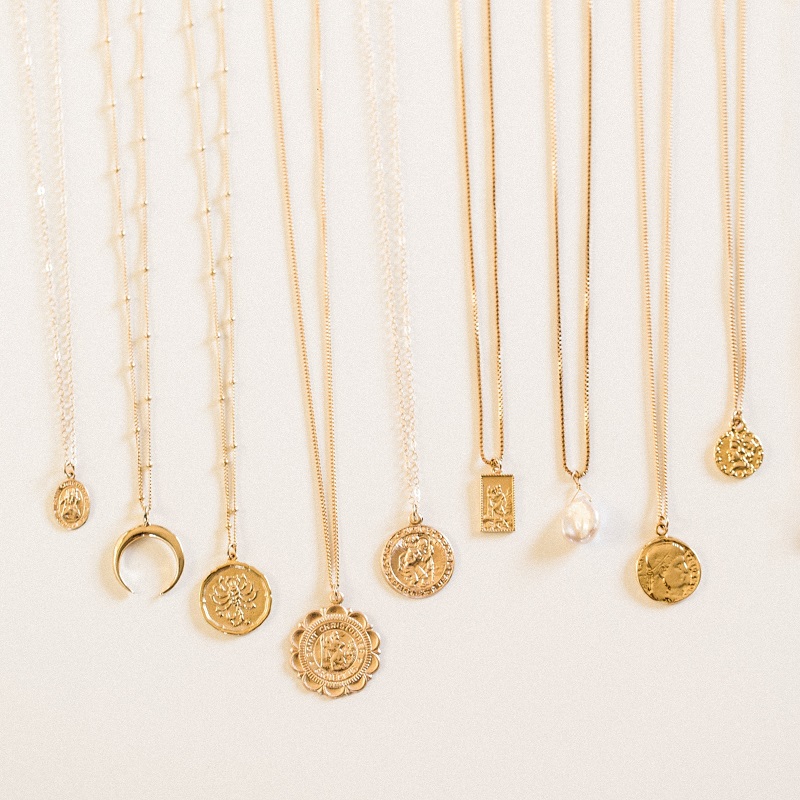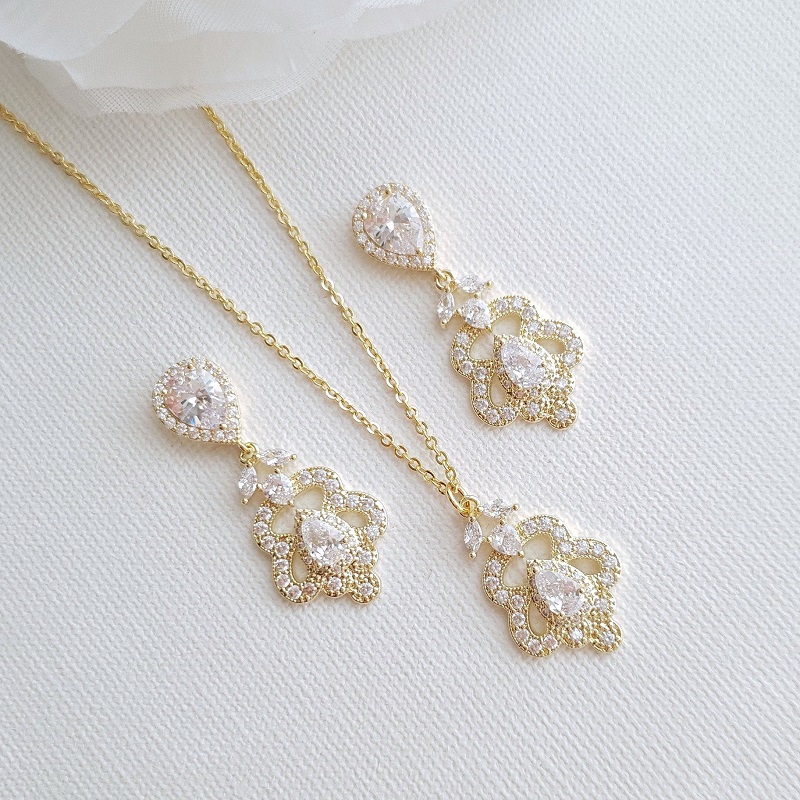How to test jewelry for gold? Jewelry has been a part of human culture for thousands of years, and gold has always been one of the most prized metals used in jewelry making. However, not all gold jewelry is created equal, and it is important to be able to accurately test and assess the purity of gold in order to determine its value. In this article, we will explore the various methods of testing jewelry for gold and provide tips for ensuring that you are purchasing or selling high-quality gold jewelry.

Visual Inspection
The first and easiest method for testing jewelry for gold is a visual inspection. Start by looking for any markings on the jewelry that indicate its purity. Most gold jewelry will have a small stamp, or “hallmark,” that indicates the karatage of the gold. Common karatages for gold jewelry include 24K, 18K, 14K, and 10K. A higher karatage indicates a higher purity of gold, with 24K gold being the purest.
In addition to checking for markings, you can also inspect the jewelry for any discoloration, tarnishing, or signs of wear and tear. Pure gold does not tarnish or corrode, so any signs of discoloration may indicate that the jewelry is not made of pure gold.
Magnet Test
Another simple test for gold jewelry is the magnet test. Gold is not magnetic, so if a piece of jewelry is attracted to a magnet, it is likely not made of pure gold. Be aware, however, that some pieces of gold jewelry may have small magnetic components, such as clasps or findings, which can cause the jewelry to be slightly attracted to a magnet. Use this test as a preliminary indicator, but not as a definitive method for testing the purity of permanent jewelry.
Acid Test
One of the most accurate methods for testing the purity of gold in jewelry is the acid test. This test uses nitric acid to determine the karatage of the gold. To perform this test, you will need a testing stone, a testing needle, and a bottle of nitric acid, as well as gloves and safety goggles to protect yourself from the acid.
Start by rubbing the jewelry against the testing stone to create a soft, visible mark. Next, use the testing needle to apply a small drop of nitric acid to the mark on the stone. If the mark changes color or disappears, it indicates that the gold is not pure. The rate at which the mark changes color can also help determine the karatage of the gold. For example, if the mark turns green or black almost immediately, it may indicate that the gold is less than 18K. If the mark remains unchanged or only slightly discolored, it is likely that the gold is of a higher purity.
Electronic Testing
Electronic testing is another reliable method for determining the purity of gold in jewelry. There are specialized electronic gold testers available that use conductivity to measure the purity of gold. These testing devices can provide accurate and precise results, making them a popular choice for professional jewelers and gold buyers. While electronic testing devices can be more expensive and require calibration and maintenance, they are a valuable tool for those who regularly work with gold jewelry.

Ultrasound Testing
Ultrasound testing is a non-destructive method for testing gold that uses high-frequency sound waves to determine the purity and authenticity of gold jewelry. This technology is often used by professional jewelers and goldsmiths to accurately assess the gold content of jewelry without causing any damage to the piece. Ultrasound testing can provide detailed information about the thickness of gold plating, the purity of the gold, and any potential impurities or defects in the metal.
XRF Testing
X-ray fluorescence (XRF) testing is a highly advanced method for testing the purity of gold in jewelry. XRF analyzers use X-ray fluorescence to accurately measure the elemental composition of a material, including the purity of gold. This method is non-destructive and provides precise and reliable results, making it a valuable tool for gold assay and quality control in the jewelry industry. While XRF testing equipment can be quite expensive and requires specialize training to operate, it is consider one of the most thorough and effective methods for testing gold jewelry.
How to clean jewelry for gold
Gold jewelry is a timeless and beautiful addition to any outfit, but over time it can become dull and tarnish. Cleaning your gold jewelry is essential to maintain its luster and shine. There are several methods for cleaning gold jewelry, each with its benefits and drawbacks.
Understanding Gold Jewelry
Before diving into the different cleaning methods, it’s important to understand the nature of gold jewelry. Gold is a soft and malleable metal that is easily scratch or damage. Pure gold is too soft for everyday wear, so it is often combine with other metals to create different alloys. The most common purity of gold used in jewelry is 14 karat (58.5% gold) or 18 karat (75% gold). While these alloys are more durable, they can still tarnish and lose their shine over time.
Furthermore, gold jewelry can also accumulate dirt, oils, and other impurities from everyday wear. These can be stubborn to remove and can contribute to the dull appearance of gold jewelry. Knowing the composition and care requirements of your gold jewelry is essential to choose the right cleaning method.
Cleaning Gold Jewelry with Soap and Water
One of the simplest and most accessible methods to clean gold jewelry is using soap and water.
To clean your gold jewelry using this method, follow these steps:
- Fill a small bowl with warm water and add a few drops of mild dish soap.
- Soak your gold jewelry in the soapy water for 15-20 minutes.
- Gently scrub your jewelry with a soft-bristle toothbrush to remove any dirt or residue.
- Rinse your jewelry under warm running water and pat dry with a soft, lint-free cloth.
This method is suitable for most types of gold jewelry and can effectively remove dirt and oils without causing damage. However, it may not be effective for removing tarnish or stubborn stains.

Using a Jewelry Cleaning Solution
For more stubborn tarnish or dirt, a handmade jewelry cleaning solution can be use to bring back the shine to your gold jewelry. There are various commercial jewelry cleaning solutions available, or you can make your own using household ingredients.
When using a jewelry cleaning solution, follow these steps:
- Dilute the jewelry cleaning solution according to the instructions on the packaging.
- Soak your gold jewelry in the solution for the recommend time, usually a few minutes.
- Gently scrub your jewelry with a soft-bristle brush to remove any stubborn stains or tarnish.
- Rinse your jewelry under warm running water and pat dry with a soft, lint-free cloth.
It’s important to follow the instructions on the cleaning solution carefully and to avoid using abrasive materials or harsh chemicals that could damage your gold jewelry.
Conclusion
Testing jewelry for gold is an important step in determining the value and quality of gold jewelry. From visual inspections to advance electronic and X-ray testing methods. There are a variety of techniques available to accurately assess the purity of gold in jewelry. Whether you are buying or selling gold jewelry. It is essential to have the knowledge and tools to test and verify the authenticity of the gold. By using the methods outline in this article. You can ensure that you are dealing with high-quality gold jewelry and make inform decisions when it comes to buying, selling, or appraising gold.

